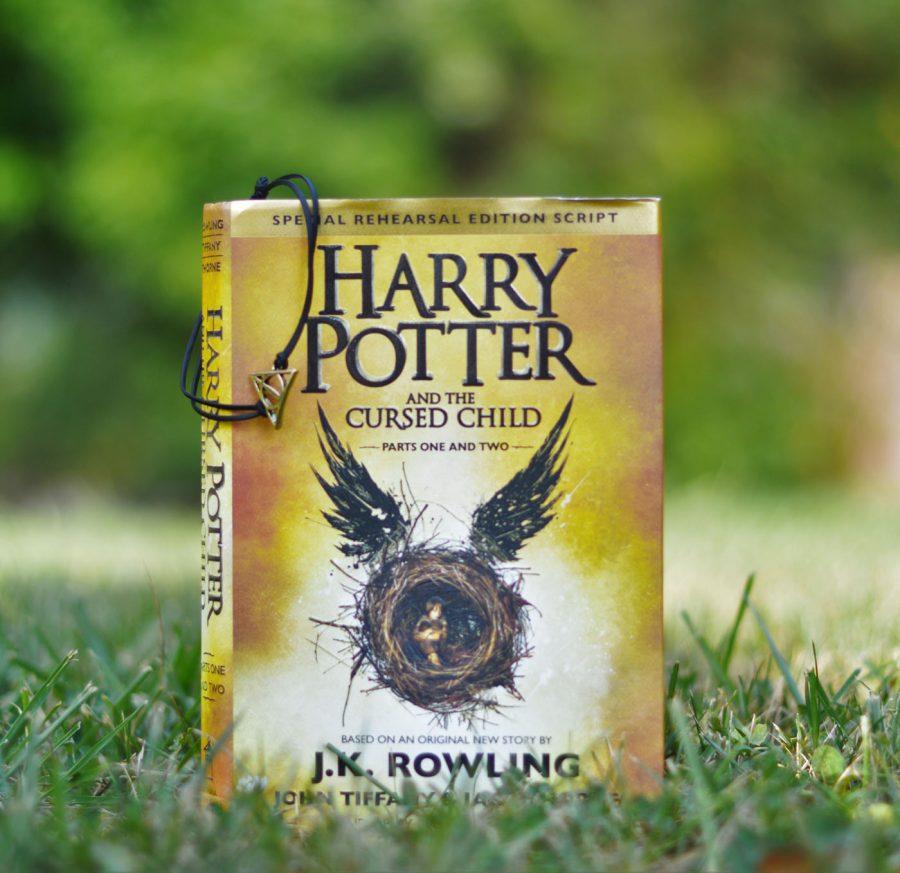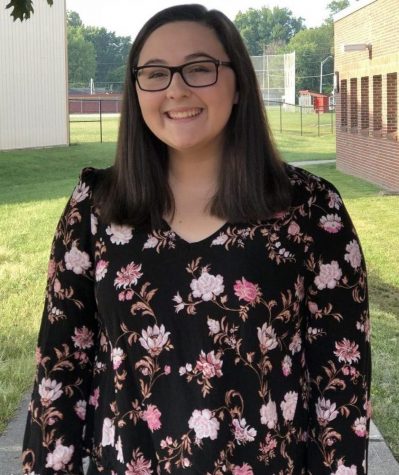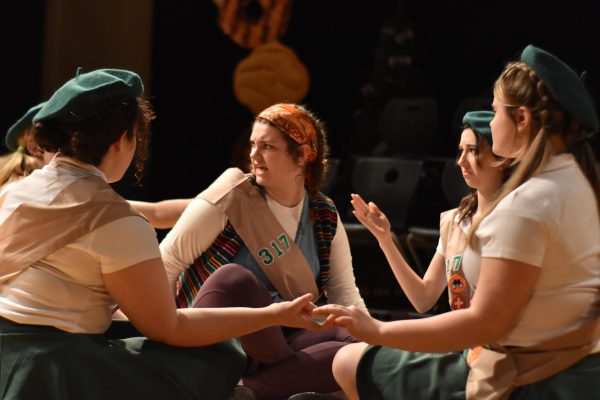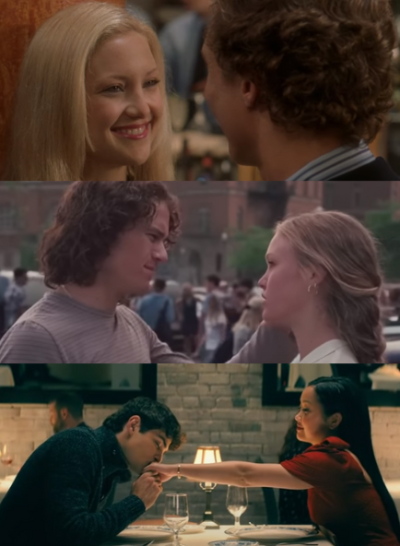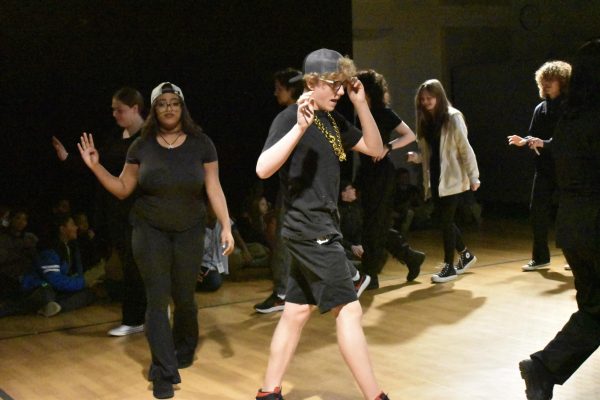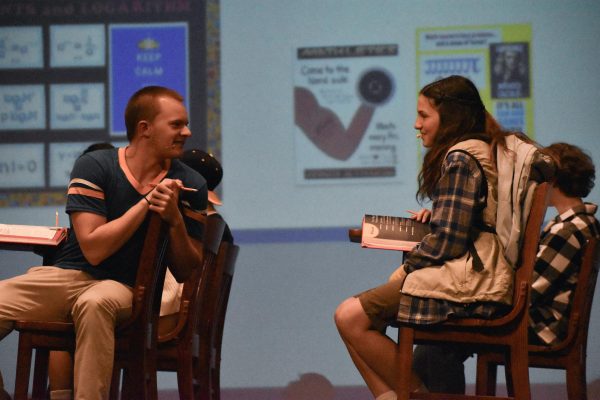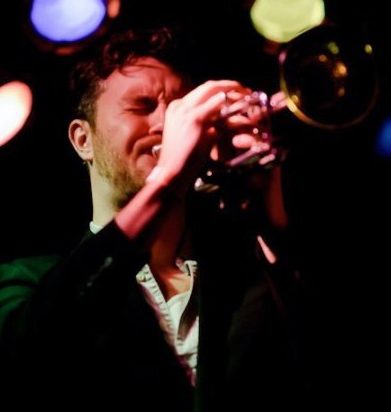The wizarding world returns in J.K. Rowling’s newest book
August 11, 2016
On July 31, kids and adults alike waited for the midnight release of the highly anticipated play script of “Harry Potter and The Cursed Child” in over 5,000 Barnes and Noble stores. J.K. Rowling’s newest adventure into the wizarding world sold two million print copies in two days.
“Harry Potter and The Cursed Child” was released on July 31 at midnight after the first performance of the theatrical version in London the night before. However, the book is different from what most Harry Potter fans are used to. Instead of the usual novel format, “Harry Potter and The Cursed Child” is released in a script format, just like the play you would see in London.
The script is set 19 years after the end of “Harry Potter and The Deathly Hallows” and follows the life of Albus Severus Potter, Harry Potter’s son. Albus is just a normal teenager trying to not live in the shadow of his extremely famous father.
Time turners, which were previously seen in “Harry Potter and The Prisoner Of Azkaban,” become a huge plot device as Albus and Scorpius Malfoy, his best friend, get a hold of one and decide to change the past. Unfortunately, nothing ever goes right when people go back in time.
Reading a script is much different from reading a novel because the reader misses out on so much characterization and the thoughts of characters. However, “Cursed Child” wasn’t hard to read at all. Actually, it was refreshing to view characters, from which we usually saw through Harry Potter’s perspective, through a completely unbiased point of view.
The strangest thing however, is that Rowling didn’t exactly write the play. Jack Thorne, an English screenwriter and playwright, wrote the majority of the play alongside John Tiffany with Rowling providing the story idea. Unfortunately, this causes some unrealistic personality changes in characters.
The biggest one I would consider is Ron Weasley’s character. In the first seven book series, Ron had purpose in being in every situation. He was Harry’s closest friend and was seen as extremely brave by the end. In “Cursed Child,” his character was sloppy. He was only included to make a few funny jokes.
Hermione Granger’s character was brilliant. She had purpose and rose to her name, unlike Ron. Readers get to see her as the Minister For Magic, which means she’s in the center of everything. Again, it was very interesting reading about Hermione when it’s not in Harry’s point of view. It really lets Hermione shine and rise to the occasion.
You get to see many old characters in the book such as Draco Malfoy, Minerva McGonagall, Ginny Weasley, Moaning Myrtle, Amos Diggory, Aunt Petunia and Uncle Vernon. Though we get to see so many returning characters, which is awesome, it would have been interesting to see Luna Lovegood, the rest of the Weasley family, Hagrid and Neville Longbottom.
Of course everyone wants to see the old characters, but the good news is: there are new characters for readers to love.
One of these new characters is Albus Potter, Harry’s middle child, and he is the first Potter to be sorted into Slytherin. He is an outcast when it comes to school and he hates Hogwarts, which is dramatically different from Harry’s love of Hogwarts.
All Albus has ever wanted is for his dad to not be Harry Potter. But, on the train ride to his first year at school he meets Scorpius, Draco Malfoy’s son. Scorpius was the Hermione Granger of his generation. He’s a dork and it’s really quite funny comparing Scorpius with his father.
Their friendship was an incredible thing to read and watch grow throughout the play. It was definitely the best part of the entire script. Rowling, Thorne and Tiffany really chose friendship as an overall theme and it’s clear throughout the entire script.
This dominant theme made for a nostalgic setting because it makes the readers think of Harry, Ron and Hermione’s friendship in the first seven books. Their friendship makes for a great theme and an ingenious way to subtly connect the two works.
Transitioning from a friend to a father, Harry’s role in “The Cursed Child” is all about being a dad to Albus. It was fun to see him being a dad and trying to understand his teenaged son, but again there were some character contradictions.
There’s a couple times in the script when Harry lashes out against a couple of people. One of them is Albus and the other is Professor McGonagall. I found this super out of character because the way he treats McGonagall doesn’t seem anything like how he should treat her.
McGonagall was a very big mother-figure for Harry along with Molly Weasley, who was absent from the script, and Harry seems to really respect her. This threw off the entire play, because it is known that Harry would not react the way he does.
However, Harry’s character goes through a lot of development and besides a few outbursts, he’s just a learning father who is trying to protect his son. We also learn a lot about Harry’s time at the Dursley’s house. The readers get more backstory on Aunt Petunia and Uncle Vernon and how they treated him and complications he had growing up.
The plot of “Harry Potter and The Cursed Child” is fast paced and exciting. Many readers were concerned that the book would be boring, due to the script format. It was intricate and abstract, so you have to stay engaged with what you’re reading or you’ll easily get lost, but it makes for such an interactive script. It feels as if you are watching a movie at home on the couch.
Overall, despite some unrealistic characterization, reading “Harry Potter and The Cursed Child” was a very enjoyable experience. There were so many great parts such as Albus and Scorpius’ relationship that completely overrule the bad parts. It’s important starting this read to remember that J.K. Rowling did not completely write the script herself, so readers will need to go in with an open mind.


